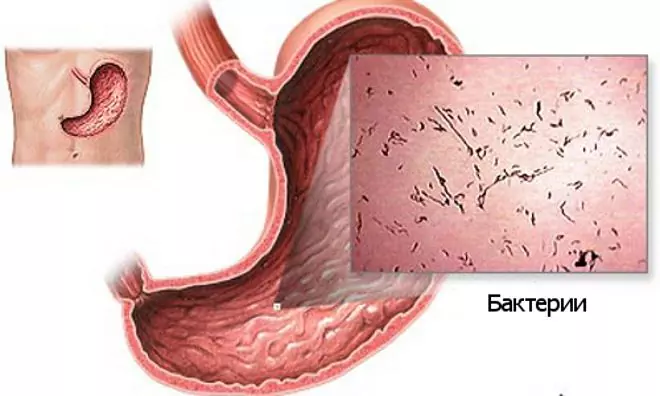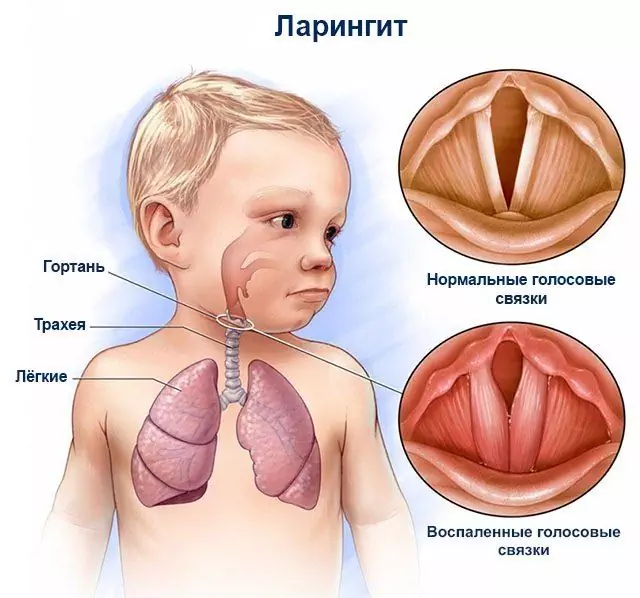- Author Rachel Wainwright [email protected].
- Public 2023-12-15 07:39.
- Last modified 2025-11-02 20:14.
Ascoril
Ascoril: instructions for use and reviews
- 1. Release form and composition
- 2. Pharmacological properties
- 3. Indications for use
- 4. Contraindications
- 5. Method of application and dosage
- 6. Side effects
- 7. Overdose
- 8. Special instructions
- 9. Application during pregnancy and lactation
- 10. Use in childhood
- 11. In case of impaired renal function
- 12. For violations of liver function
- 13. Drug interactions
- 14. Analogs
- 15. Terms and conditions of storage
- 16. Terms of dispensing from pharmacies
- 17. Reviews
- 18. Price in pharmacies
Latin name: Ascoril
ATX code: R05C
Active ingredient: bromhexine + guaifenesin + salbutamol (bromhexine + guaifenesin + salbutamol)
Manufacturer: Glenmark (India)
Description and photo update: 2019-19-08
Prices in pharmacies: from 138 rubles.
Buy

Ascoril is a combined drug with expectorant, bronchodilator, mucolytic action.
Release form and composition
Dosage form Ascoril - tablets: round flat form, with a chamfer and a dividing line on one side, white (10 pcs. In a blister strip, in a cardboard box 1, 2 or 5 packs).
Content of active ingredients in 1 tablet:
- salbutamol sulfate: 2 mg;
- guaifenesin: 100 mg;
- bromhexine hydrochloride: 8 mg.
Auxiliary components: corn starch, calcium hydrogen phosphate, methylparaben (methyl parahydroxybenzoate), colloidal silicon dioxide, propylparaben (propyl parahydroxybenzoate), magnesium stearate, purified talc.
Pharmacological properties
Pharmacodynamics
Ascoril is a combined drug with bronchodilator, expectorant and mucolytic effect.
Salbutamol has a bronchodilator effect, stimulating the beta 2 -adrenergic receptors of the blood vessels, bronchi and myometrium. Eliminates or prevents the development of bronchospasm, reduces resistance in the airways, increases the vital capacity of the lungs. This substance promotes the expansion of the coronary arteries without lowering blood pressure.
Guaifenesin is a mucolytic drug. Provides a decrease in the surface tension of the structures of the bronchopulmonary apparatus, stimulation of secretory cells of the bronchial mucosa, the production of neutral polysaccharides, depolymerization of acidic mucopolysaccharides, a decrease in sputum viscosity, activation of the ciliary apparatus of the bronchi, facilitating the removal of sputum and the transition from unproductive cough to productive.
Bromhexine is a mucolytic drug that provides antitussive and expectorant effects. Promotes an increase in the serous component of bronchial secretions, activation of the cilia of the ciliated epithelium, reducing the viscosity of sputum, increasing its volume and improving discharge.
Pharmacokinetics
Salbutamol
Oral absorption is high. In the case of food intake, the absorption rate decreases, but the bioavailability does not change. Approximately 10% binds to plasma proteins. Penetrates the placenta. It is metabolized in the liver (first-pass effect) and intestinal wall, inactivated to 4-o-ester sulfate by phenol sulfotransferase. The half-life is from 3.8 to 6 hours. From 69 to 90% of the dose taken is excreted by the kidneys, mainly in the form of an inactive phenol sulfate metabolite (60%) within 72 hours, as well as in the bile (4%). When taken orally, the bioavailability is approximately 50%.
Guaifenesin
It is rapidly absorbed from the gastrointestinal tract (25-30 minutes after oral administration). The half-life is about 1 hour. Penetrates into tissues that contain acidic mucopolysaccharides. About 60% of the administered drug is metabolized in the liver. It is excreted by the lungs with sputum, as well as by the kidneys (unchanged and in the form of inactive metabolites).
Bromhexine
In the case of oral administration, 99% of the drug is absorbed from the gastrointestinal tract within 30 minutes. Bioavailability is low due to the effect of the first pass through the liver. Penetrates the blood-brain and placental barriers. It is demethylated and oxidized in the liver, being metabolized to obtain the pharmacologically active ambroxol. Due to the slow reverse diffusion, the half-life is about 15 hours. It is excreted by the kidneys. In the case of chronic renal failure, excretion of metabolites is impaired. With repeated use, it can cumulate.
Indications for use
According to the instructions, Ascoril is used as part of a combination therapy for chronic and acute forms of bronchopulmonary pathologies, occurring with the formation and difficult separation of a viscous secret:
- pneumonia;
- emphysema of the lungs;
- pneumoconiosis;
- obstructive bronchitis;
- tracheobronchitis;
- bronchial asthma;
- whooping cough;
- pulmonary tuberculosis.
Contraindications
- exacerbation of gastric ulcer and duodenal ulcer;
- gastric bleeding;
- heart defects;
- tachyarrhythmia;
- arterial hypertension;
- myocarditis;
- glaucoma;
- decompensated diabetes mellitus;
- hepatic and / or renal failure;
- thyrotoxicosis;
- the period of pregnancy and breastfeeding;
- age up to 6 years;
- hypersensitivity to the components of the drug.
It is recommended with caution to prescribe Ascoril for diabetes mellitus, during remission of gastric ulcer and duodenal ulcer.
Instructions for the use of Ascoril: method and dosage
Ascoril tablets are intended for oral administration.
Patients over 12 years old are prescribed 1 piece. 3 times a day. Ascoril for children from 6 to 12 years old is recommended for 1/2 or 1 tablet 3 times a day.
Side effects
While taking high doses of the drug:
- allergic reactions: rarely - skin rash, urticaria;
- others: rarely - nausea, vomiting, headache, drowsiness, sleep disturbance, diarrhea, urine staining pink, dizziness, heart palpitations, increased nervous excitability, convulsions, tremors, exacerbation of gastric ulcer and duodenal ulcer, bronchospasm, collapse.
Overdose
Overdose symptoms: increased manifestations of side effects.
Treatment: symptomatic therapy.
special instructions
It is not recommended to drink tablets with alkaline drinks (mineral water, milk with soda).
Children under the age of 6 are advised to prescribe Ascoril expectorant syrup.
Application during pregnancy and lactation
Ascoril is contraindicated for the treatment of pregnant women, as well as during breastfeeding. If necessary, taking the drug during lactation should stop breastfeeding.
Pediatric use
Ascoril is contraindicated for children under 6 years of age.
With impaired renal function
In case of renal failure, it is prohibited to take Ascoril.
For violations of liver function
With liver failure, Ascoril tablets are prohibited.
Drug interactions
Concomitant therapy with other antitussives and codeine-containing drugs causes difficulty in the discharge of liquefied sputum, so these combinations are not recommended.
The interaction of Ascoril with simultaneous use with other drugs is due to the combined composition of the drug:
- salbutamol: causes a decrease in the level of potassium concentration in plasma when combined with glucocorticosteroids and diuretics;
- bromhexine: promotes the penetration of cephalexin, erythromycin, oxytetracycline (antibiotics) into the lung tissue.
The risk of developing undesirable effects increases when the drug is combined with theophylline, other beta 2 -adrenomimetic agents, since they increase the activity of salbutamol.
Ascoril is not recommended for concomitant use with monoamine oxidase inhibitors, propranolol and other non-selective beta-adrenergic blockers.
Analogs
Ascoril analogs are Ascoril expectorant, Kofasma.
Terms and conditions of storage
Store in a place protected from moisture and light at temperatures up to 25 ° C. Keep out of the reach of children.
Shelf life is 2 years.
Terms of dispensing from pharmacies
Dispensed by prescription.
Reviews about Ascoril
Reviews of Ascoril are mostly positive: according to users, the drug is inexpensive and quickly begins to act. At the same time, some patients complain of the development of strong side effects (increased blood pressure, dizziness, tremors, heart palpitations).
Price for Ascoril in pharmacies
The approximate price for Ascoril is: 10 tablets - 235 rubles, 20 tablets - 350 rubles, 50 tablets - 750 rubles.
Ascoril: prices in online pharmacies
|
Drug name Price Pharmacy |
|
Ascoril tablets 10 pcs. RUB 138 Buy |
|
Ascoril tablets 10 pcs. 183 r Buy |
|
Ascoril expectorant 4 mg + 100 mg + 2 mg + 1 mg / 10 ml syrup 100 ml 1 pc. 190 RUB Buy |
|
Reviews Ascoril Expectorant 190 RUB Buy |
|
Ascoril tablets 20 pcs. 229 r Buy |
|
Ascoril Expectorant syrup 100ml 253 r Buy |
|
Ascoril expectorant 4 mg + 100 mg + 2 mg + 1 mg / 10 ml syrup 200 ml 1 pc. 265 RUB Buy |
|
Ascoril tablets 20 pcs. 321 r Buy |
|
Ascoril Expectorant syrup 200ml 386 r Buy |
|
Ascoril tablets 50 pcs. RUB 500 Buy |
|
Ascoril tablets 50 pcs. 718 RUB Buy |
| See all offers from pharmacies |

Anna Kozlova Medical journalist About the author
Education: Rostov State Medical University, specialty "General Medicine".
Information about the drug is generalized, provided for informational purposes only and does not replace the official instructions. Self-medication is hazardous to health!






